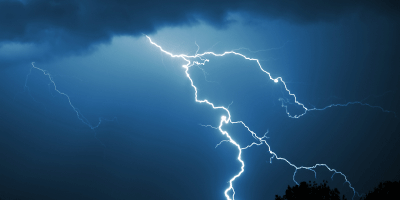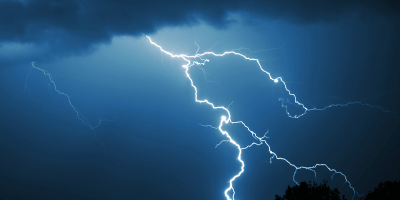Neutron Bursts in Lab Lightning
Lightning is more than just an impressive electric display. Observations indicate that bursts of neutrons are emitted during thunderstorms, implying nuclear reactions occur in lightning. However, physicists have been unable to identify which reactions. To better understand neutron bursts, a team of Russian researchers has created lightninglike discharges in a laboratory setting. In Physical Review Letters, they report the first detection of neutron emission from a controlled discharge. The results suggest that most burst neutrons are “fast” with initial energies around mega-electron-volts.
Lightning occurs when strong electric fields build up in a cloud (as Benjamin Franklin’s famous kite-flying experiment demonstrated), but which process initiates the discharge is still a matter of debate. Other lightning mysteries concern the generation of high-energy radiation and particles, such as x rays, gamma rays, positrons, and neutrons. The neutrons could arise from reactions between accelerated ions or from photonuclear interactions, but current empirical data is not sufficient to pinpoint the mechanism.
In order to explore neutron bursts more closely, Aleksey Agafonov of the Lebedev Physical Institute of the Russian Academy of Sciences, Russia, and his colleagues reconfigured an electron beam accelerator to generate high-voltage discharges in air. Using a variety of different detectors, the team identified neutrons streaming out from about a quarter of the discharge events. The neutron flux fell off more slowly than the inverse distance squared ( ), implying that the neutrons originate from an extended region, rather than a localized point. The authors state that more experiments (such as precision time-of-flight measurements) are needed to better interpret these results. – Michael Schirber





